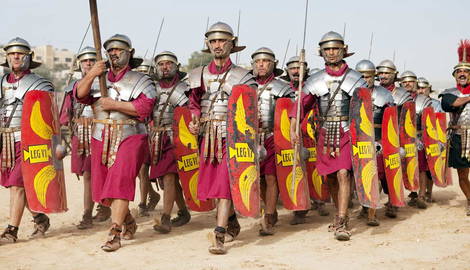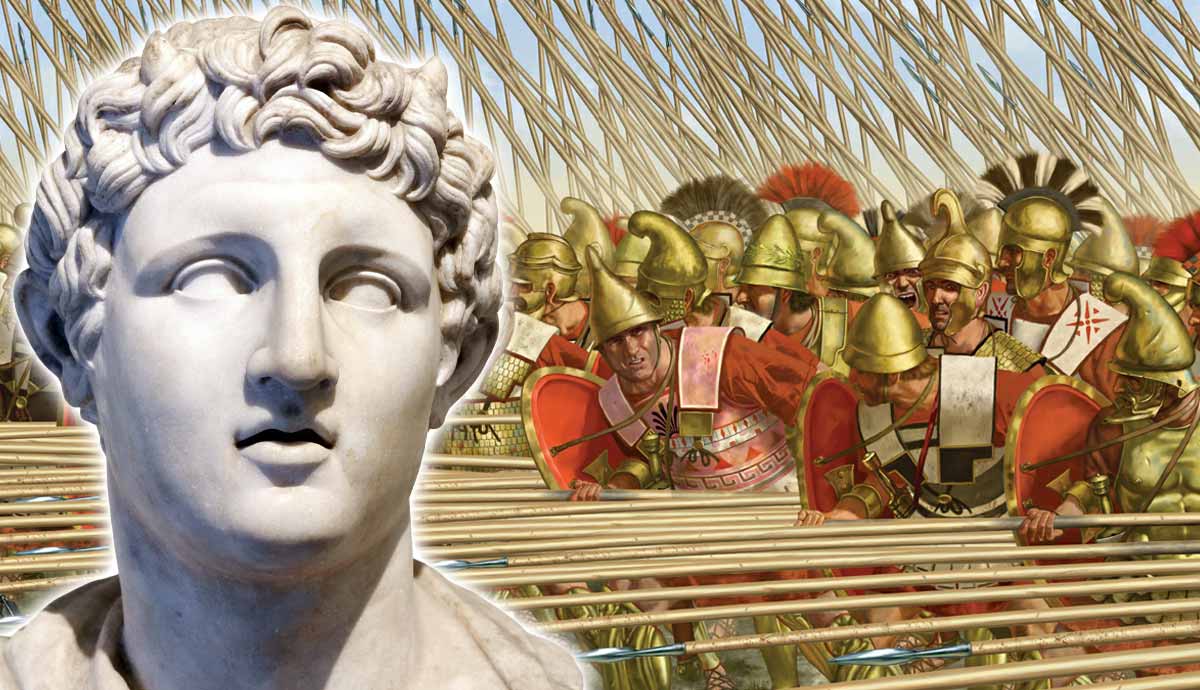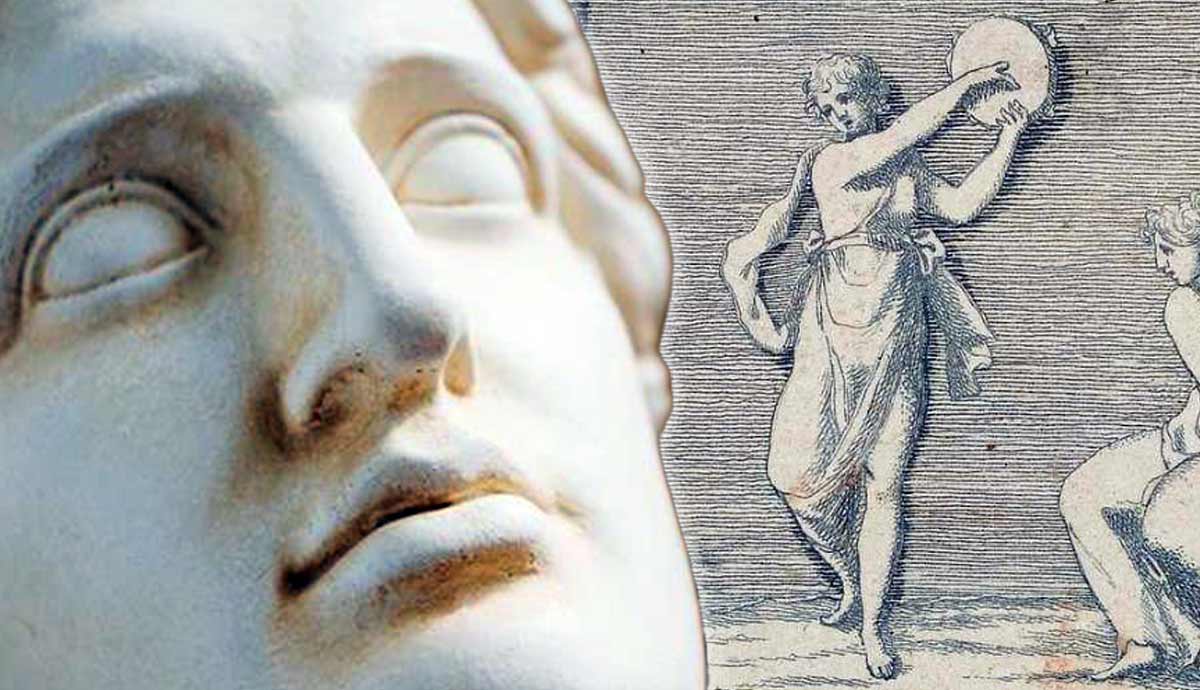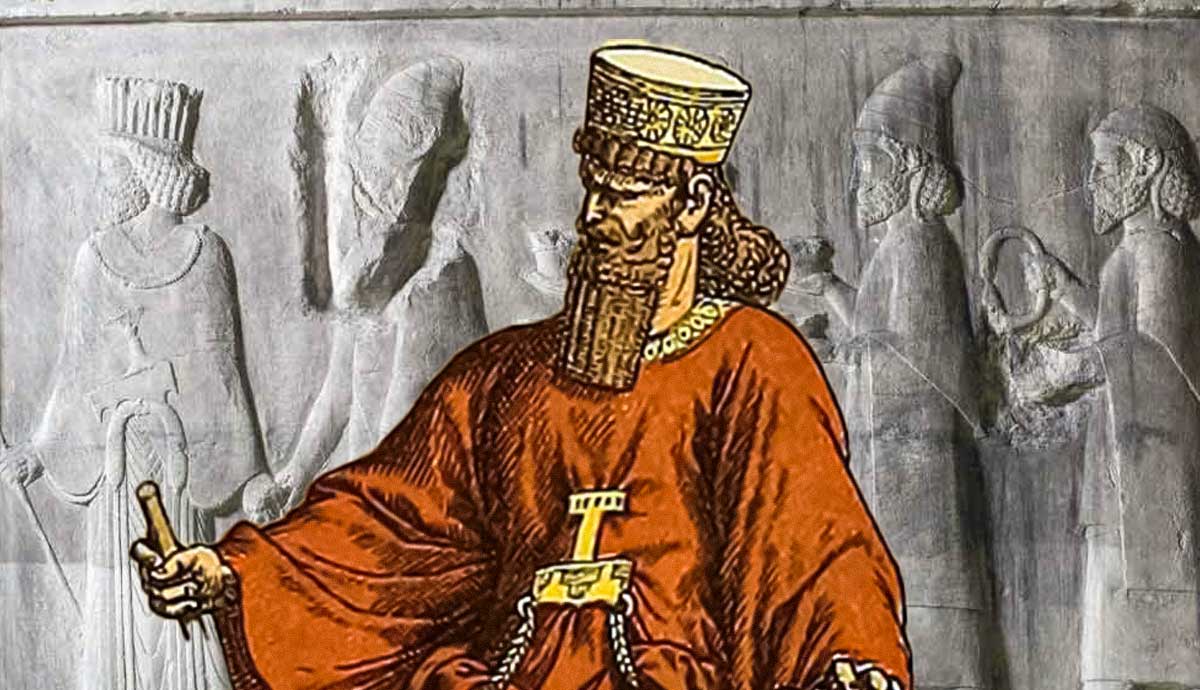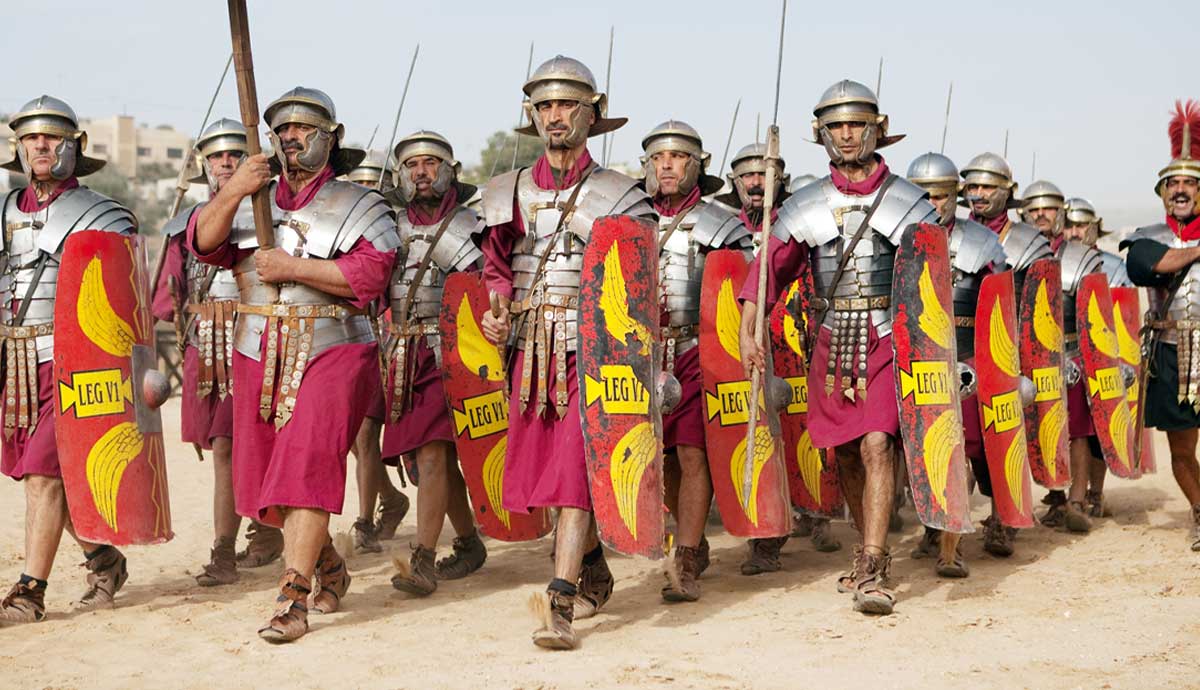
The growth of the Roman Republic forever changed the ancient world. For those who lived through it, the swift rise of Rome from obscurity to superpower must have been stunning. Polybius, a leading politician in a Greek state that had been Rome’s ally and then enemy, experienced the decisive decades of the 3rd and 2nd century BCE that changed the course of history. Held hostage in Rome, he turned his attention to explaining how the Romans had seemingly conquered the world in half a century. The result was the Histories, one of the key works of Greco-Roman history and political thought.
The Life of Polybius

Polybius was born in the Greek city of Megalopolis sometime in the late 3rd century BCE. His family were among the leading citizens of the Achaian League, a federal state governing much of southern Greece. In his early life, Polybius was an aspiring Achaian politician and military commander, but this career was cut short by the Third Macedonian War between the Romans and Macedonians. While the Achaians were amongst Rome’s Greek allies, they were one of a number of allies suspected of insufficient loyalty and consequently punished. For the Achaians, this meant that in 167 BCE, hundreds of their leading citizens, including Polybius, were taken back to Italy as hostages. They were held for almost twenty years.
Exile changed Polybius’ life. Not only did he survive, but by befriending the powerful Scipio Aemilianus, he came close to the Roman elite. This relationship gave him a relatively privileged exile, allowing him to travel, interview the Roman elite who were reshaping the world, and get to know Rome from the inside. He witnessed first-hand some of the great events of his day, such as the Roman siege of Carthage.

After the Achaians tried to break free from Roman influence in the disastrous Achaian War, Polybius was a figure the Romans could trust to oversee affairs in southern Greece (Pausanias 8.37). Before he died, supposedly falling from a horse at the age of 82 around 118 BCE, Polybius had turned this experience into his Histories, a monumental work detailing the events of his lifetime and trying to explain the rapid rise of Rome to his fellow Greeks.
The Histories

Polybius’ history covers events from the First Punic War in 264 BCE to the Achaian War in 146 BCE. In that period, Rome went from a powerful Italian city-state to the first power to control almost all of the Mediterranean, having defeated Carthage, Macedonia, the Seleucids, and the Greeks. The main focus was on the 53-year period between 220 BCE and 167 BCE when Rome went from near destruction at the hands of Hannibal to unparalleled power.
For Polybius, history had to be more than just an entertaining set of stories. From the very beginning of his work, he repeatedly informs us that history should be an education (Polybius 1.1), and that for future politicians, there can be no better education than the study of history. Indeed, the historian and politician should ideally, as Polybius was, be the same person. Reading history prepares you for political life, while the best people to write history are those who lived through and played a role in events (12.28).
Polybius’s insistence on the importance of history and the proper way to write it (from direct experience, first-hand research, and free from sensationalism) can, at times, make reading his Histories difficult. He inserts long tangents criticizing other historians who fell short of his standards. However, the result is one of the greatest works of history from the ancient world.
Sadly, not all of it survived. Most of the early chapters (Books) are complete but become more fragmentary as you progress. Much of the narrative of the 2nd century is lost or fragmentary. Nevertheless, we can get a sense of the lost sections of Polybius’ work because it was drawn on by later writers such as Plutarch and Livy.
Book Six: The Roman Constitution

Unfortunately, amongst the incomplete sections is the very heart of the Histories, Book 6. It was here that Polybius answered his central question: how, in the space of just a few decades, had the Roman Republic managed to become a superpower? While Fortune (Tyche) played a part in Polybius’ world, as it did for all Greeks, the answer lay in the Roman constitution. It was the excellence of its constitution that explained the Republic’s rise (Seager, 2013, 248).
Polybius introduced the question of the Roman constitution at the very start of the Histories (Polybius 1.1), but he chose to place the discussion at a specific point in his story. In the early books, the narrative switches between events in Italy, Greece, and the Levant. The Roman thread of the story reached the disastrous defeat at the Battle of Cannae in 216 BCE. Following this third successive defeat to Hannibal, Rome was in real danger of destruction. Polybius deliberately chose this moment of crisis to explain why Rome survived and thrived (Erskine, 2013, 236).
Anacyclosis

Polybius begins book 6 with his own contribution to political thought (Walbank, 2002, 202). Greek writers had long recognized three categories of regime: monarchy, aristocracy, and democracy. Nuance was provided by pointing to positive and negative versions of each. For instance, monarchy could be seen as a positive version of one-man rule, with tyranny being its linked but negative form. Polybius’ innovation was to suggest a natural cycle of six possible forms of constitution: the Anacyclosis.
In Polybius’ scheme, each positive form naturally progresses into a degenerate form, producing a reaction and change of regime. He imagines a primitive world in which a strong man becomes a leader and provides protection as a monarch. As the generations pass, his successors lose their virtue and are overthrown by the aristocracy. This new regime governs well but degenerates into an oligarchy. The people then replace oligarchy with democracy. However, it too will become corrupted over time as later leaders compete for power and lead the people into the final form, ochlocracy or mob rule. At this point, the ruined society goes back to the beginning and seeks a leader to rescue it.
The Anacyclosis is overly schematic and it would be impossible to find a complete real-world example. However, Polybius insisted that the careful analyst could determine where a society was in this natural process, and know its future. While that seems to take the idea too far, overall, it does make sense from the position of 2nd-century BCE Greece.
By Polybius’ day, the independent city-state (polis) had been central to Greek political life for centuries. A historically minded person such as Polybius had plenty of data to draw on to assess Greek politics. In a Greece devastated and conquered by Rome, there must have been a sense of failure. While no single polis fitted exactly Polybius’ scheme, all of them had experienced parts of it as regimes changed, often violently, from single-person rule to oligarchy or democracy and back again. There had been no stable Greek political regime. As Polybius well knew, even promising developments such as federal states like his own Achaia had also, in his mind at least, failed as democracy became mob rule and brought on disaster.
As far as Polybius could see, only one state had managed to escape this cycle, and it was not in Greece. Only Rome had found a way out of the anacyclosis.
A Mixed Regime

For Polybius, the Roman Republic was a mixed regime that contained elements of democracy, aristocracy, and monarchy. Rather than being competing regimes, the three co-existed and upheld the Roman state.
The idea of a mixed regime was not new and can be traced back at least as far as Thucydides in the 5th century BCE (Hahn, 2013, 179). Plato and Aristotle developed the idea further as it became seen as the best type of regime (Hahn, 2013, 180-187). Polybius saw Rome as proof of the virtue of the mixed constitution as it had saved the Republic from the Anacyclosis.
Having made his point, Polybius goes on to describe the Roman constitution itself. In his reading, the two annually elected Consuls represent the monarchic element as they have near-absolute powers while on campaign and act as head administrators (6.12). The Senate, a body of older citizens that controls the treasury and greets ambassadors, is the aristocratic element (6.13). Democracy is seen in the people and their assemblies, which ultimately ratify decisions and give honors (6.14).

Each part has significant powers but ultimately relies on the other parts to take action. For example, the consul may well be the supreme commander on campaign, but he relies on the Senate for funds and needs the people to confirm any settlements made in the field. The different regimes are then interdependent and rely on each other rather than competing. This makes Rome strong and stable during emergencies and prevents an accumulation of power in peacetime (6.18).
Polybius’ scheme has been criticized as being overly schematic and deliberately distorting the different roles in order to fit the theory (Seager, 2013, 248-251). It is also clear that Polybius is at odds with many of his contemporaries. When describing the Senate, he tells us that because of its power, many Greeks consider Rome to be an aristocracy (6.13), a view many later historians would also take.
Polybius is perhaps on firmer ground when he mentions another strength of the Roman Republic. Mixed regimes were not entirely new. The model was at times applied to Sparta, which is often viewed favorably in surviving Greek political thought. However, Rome was better because the Spartan constitution had, at least mythologically, been the invention of one man, Lycurgus. The Roman Republic was stronger because it had evolved naturally over time. It had come about as a result of overcoming crises and successfully adaption and negotiation (6.10).
Polybius’ account of the Roman state is not especially detailed nor accurate. But this is only one part of Polybius’ explanation for Rome’s success.
The Roman Army

The largest part of Book 6 is not dedicated to the Constitution as we would understand it. Instead, Polybius adopted the much broader Greek term of politeia, which refers to the society more widely (Erskine, 2013, 233). Because of this, Polybius uses a large part of book 6 to go into great detail about the Roman army and military culture.
Polybius carefully describes the specific steps of the recruitment process for the Legions, the construction and layout of camps, the organization of the watch, the types of weapons used by each unit, and the often brutal discipline (6.19-37). While it has not survived, we know Polybius, a former cavalry commander, wrote a work on military tactics, so it is not surprising to find him deeply interested in the successful Roman war machine. However, the deliberate level of detail is meant to stress the impressive nature of Rome’s military organization and inform us that, in the Roman politeia, everything is subordinate to the needs of the state (Erskine, 2013, 238-240).
The Roman army is the Roman politeia. Its different parts work together to enforce discipline and maintain its organization. This citizen army is a cohesive force that only competes for honor and glory and is willing to sacrifice itself. While Polybius states that the measure of a good constitution is the good customs it creates in its citizens (6.47), it is also clear that, throughout Book 6, Polybius has been measuring success in military terms. For Polybius, the Athenians, Thebans, Spartans, and Carthaginians all had their successes, but their hegemony was brief. Only the Roman constitution produced the Roman army, which swept all before it. A key difference is that all other states quickly fell from power, whereas only the Romans remained strong enough to bounce back from certain defeat.
Polybius and Rome’s Future

Polybius’ description of the Roman constitution creates the impression of a society in which the parts serve the whole (Erskine, 2013, 231). The mixed regime forces the different parts of society to work together rather than compete against each other, ensuring peace at home. The army this society creates protects it from external threats and extends Roman power. As book 6 draws to a close, Polybius has offered his explanation for the extraordinary rise of the Roman Republic. He is ready to return to the aftermath of Cannae and Rome’s recovery.
Polybius clearly admired Rome, but he was no idealist. True to his belief that there is no ultimate end to history and the Anacyclosis, he insists that decay is inevitable and will also come to Rome (6.57). Free from any external threat, Rome will instead suffer internal troubles. The great wealth coming into the society will unbalance it. The competition for office will become fiercer. The people will feel they are being cheated by some and urged on by others. The different parts of the mixed regime will then decay, and the cohesiveness of the society will be broken. As Polybius himself may have believed, by the time of his death in the last quarter of the 2nd century, the fall of the Roman Republic was already underway.
Selected Bibliography
Walbank, F. (1979) “Introduction” in Polybius: The Rise of the Roman Empire, Scott-Kilvert, I. (Tr.), Penguin Books.
Walbank, F. (2002) Polybius, Rome, and the Hellenistic World: Essays and Reflections, Cambridge University Press.
Erskine, A. (2013) “How to Rule the World: Polybius Book 6 Reconsidered,” Polybius and his world. Essays in memory of F. W. Walbank, Gibson, B. and Harrison, T. (Eds.) 231-246, Oxford University Press.
Seager, R. (2013) “Polybius’ Distortions of the Roman ‘Constitution’: A Simpl(istic) Explanation,” Polybius and his world. Essays in memory of F. W. Walbank, Gibson, B. and Harrison, T. (Eds.) 247-254, Oxford University Press.
Hahn, D. (2013) “The Mixed Constitution in Greek Political Thought,” A Companion to Greek and Roman Political Thought, Balot, R. (ed.) 178-198, Blackwell Publishing.
